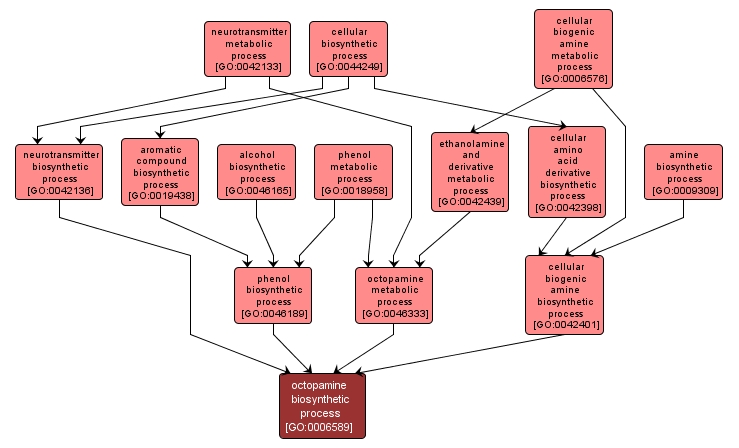GO TERM SUMMARY
|
| Name: |
octopamine biosynthetic process |
| Acc: |
GO:0006589 |
| Aspect: |
Biological Process |
| Desc: |
The chemical reactions and pathways resulting in the formation of octopamine, 1-(p-hydroxyphenyl)-2-aminoethanol. The D enantiomer is about one-tenth as active as norepihephrine and is found in the salivary glands of Octopus and Eledone species. |
Synonyms:
- octopamine synthesis
- octopamine biosynthesis
- octopamine anabolism
- octopamine formation
|
|

|
INTERACTIVE GO GRAPH
|














